Idea by
Ivars Kalvans
http://ivarskalvans.blogspot.co.uk/
Call for ideas 2017
Suburban condenser
Suburban condenser
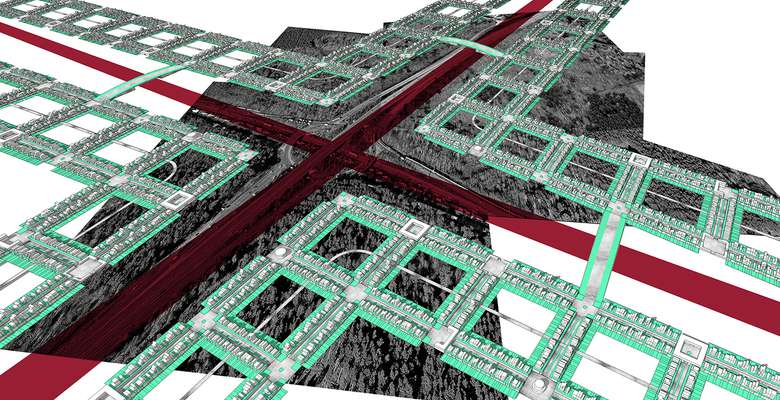
London suburbia is a complex reflection of political, social and economic processes in the urban core such as gentrification, a property bubble and housing shortage. More and more households unable to pay high rents and mortgages are being expelled out from the inner city into suburbs and then, further out to the fringes. Unwillingness to build high and densely, inability to accommodate empty homes and complexities of brownfield redevelopment have led to ever increasing expanding of the Greater London. In the face of the increasing influx of population and scarcity of land, project proposes a linear suburbanisation - a concentrated, medium-density but high-intensity development which uses the land effectively and creates diverse built environment alongside the infrastructure. By exploiting the most basic urban elements and typologies such as street, perimeter block and courtyard, and placing them in a dialogue with a natural setting, a new type of suburbia emerges.

The project draws a mental framework to the set of spatial, social and environmental issues of outer suburbia and its relationship with the inner city. London's Metropolitan Green Belt designated in the 50s to limit urban sprawl into the countryside, today aggravates prolonged problems of connectivity, inefficient use of land and expanding beyond the green belt. The project proposes infrastructure integrated development within preserved yet transformed Green Belt.
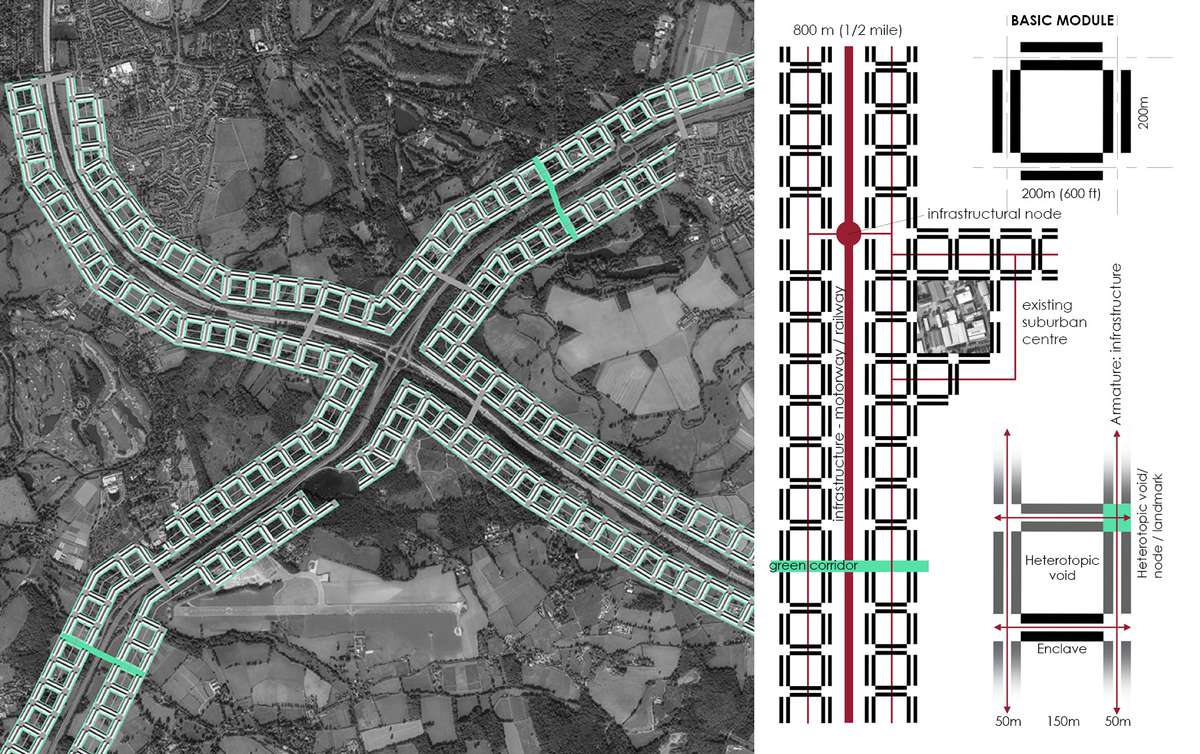
The project rethinks the old ideas of Metro-land in a contemporary context. It uses infrastructure as a form-defining armature which supports chain-link enclaves and is perforated with heterotopic voids. Infrastructure is an integral part of the formation and its footprint ratio to entire development is minimised.
Suburban condenser defines a clear edge between Nature and build environment. At the same time, by being porous, it allows the Nature flow through through.
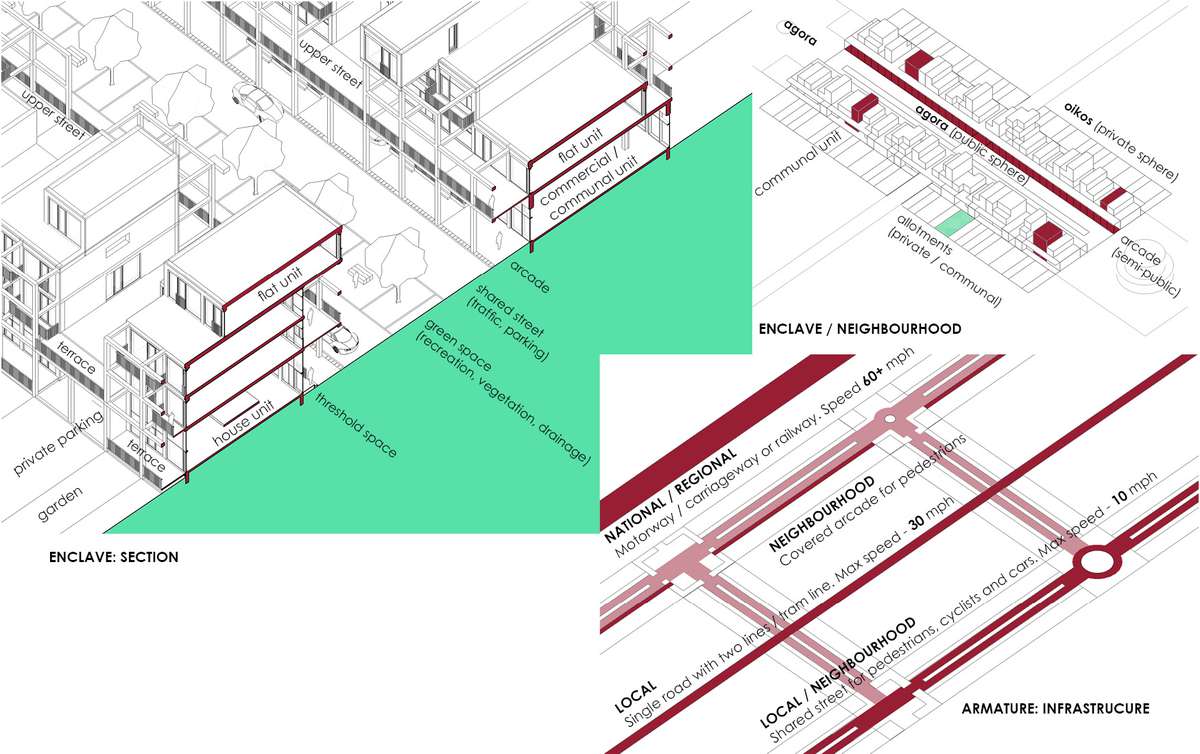
Infrastructure has a clear functional, scale and speed hierarchy. As such it does not have a segregating effect on communities.
The enclave is a self-organising system which accommodates the private sphere - housing, business and retail activities, incorporate communal life and embraces the public sphere. By using uniformity and repetition, equality is ensured yet it is diversified by its context and inhabitants – heterogenous and egalitarian society.
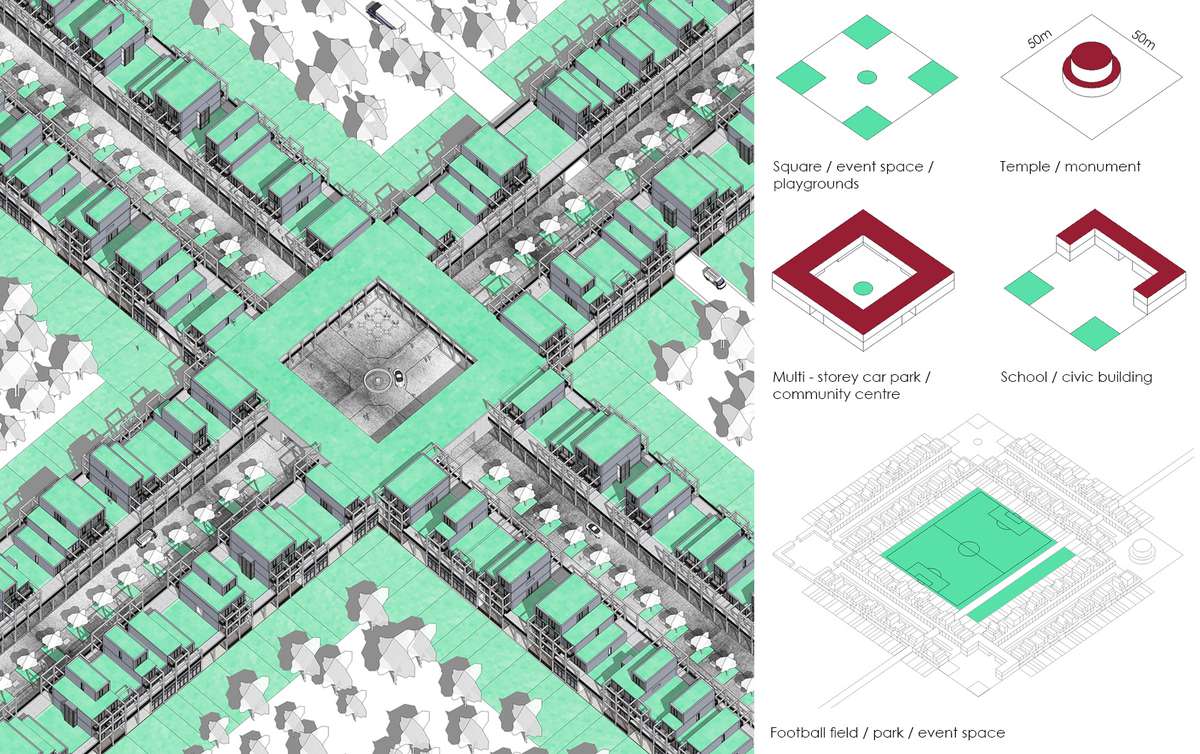
Heterotopic voids provide a space for uncertainty, endless possibilities and transformations for the future development. They are landmarks and nodes within the continuous framework.
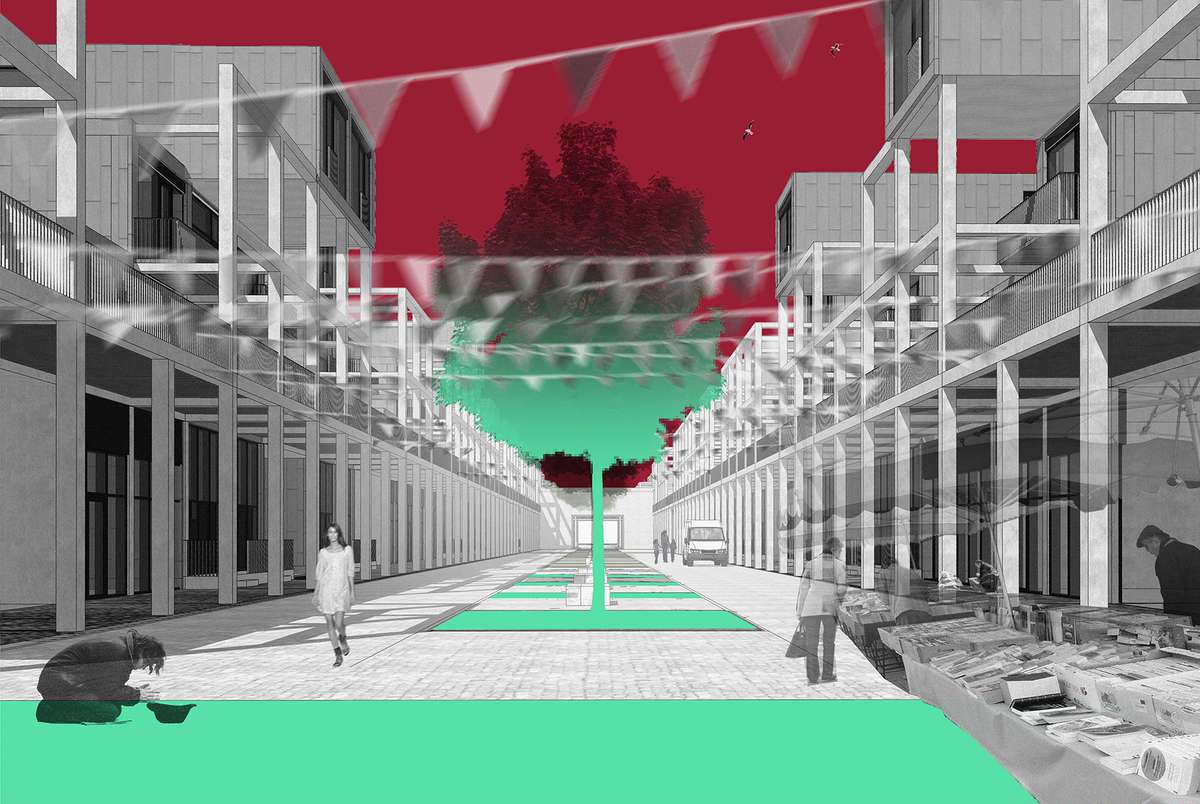
The suburban condenser is a built environment where:
▪ Public sphere is provided for knowledge and social exchange.
▪ Co-working and work from home are supported by providing facilities next to the living space.
▪ Different housing typologies offer accommodation for a diverse spectrum of households.
▪ Spaces are adaptable and extendable by using flexible modules, layouts and structure.
Suburban condenser
Suburban condenser

London suburbia is a complex reflection of political, social and economic processes in the urban core such as gentrification, a property bubble and housing shortage. More and more households unable to pay high rents and mortgages are being expelled out from the inner city into suburbs and then, further out to the fringes. Unwillingness to build high and densely, inability to accommodate empty homes and complexities of brownfield redevelopment have led to ever increasing expanding of the Greater London. In the face of the increasing influx of population and scarcity of land, project proposes a linear suburbanisation - a concentrated, medium-density but high-intensity development which uses the land effectively and creates diverse built environment alongside the infrastructure. By exploiting the most basic urban elements and typologies such as street, perimeter block and courtyard, and placing them in a dialogue with a natural setting, a new type of suburbia emerges.
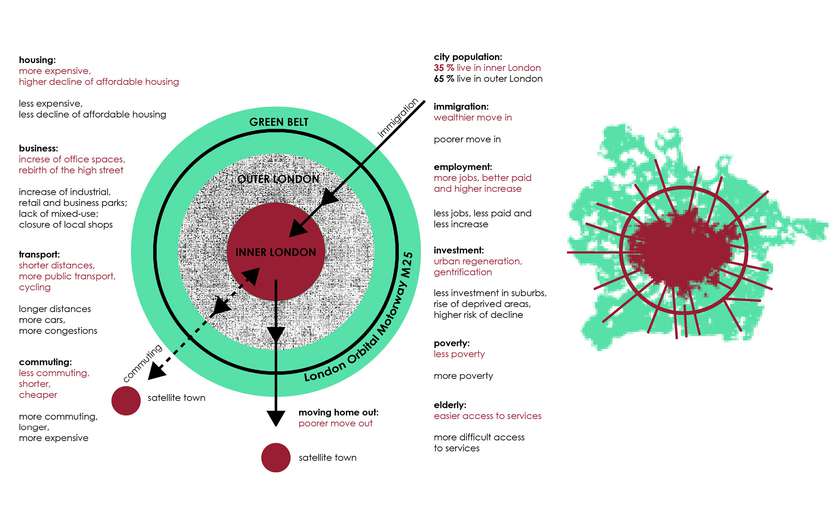
The project draws a mental framework to the set of spatial, social and environmental issues of outer suburbia and its relationship with the inner city. London's Metropolitan Green Belt designated in the 50s to limit urban sprawl into the countryside, today aggravates prolonged problems of connectivity, inefficient use of land and expanding beyond the green belt. The project proposes infrastructure integrated development within preserved yet transformed Green Belt.
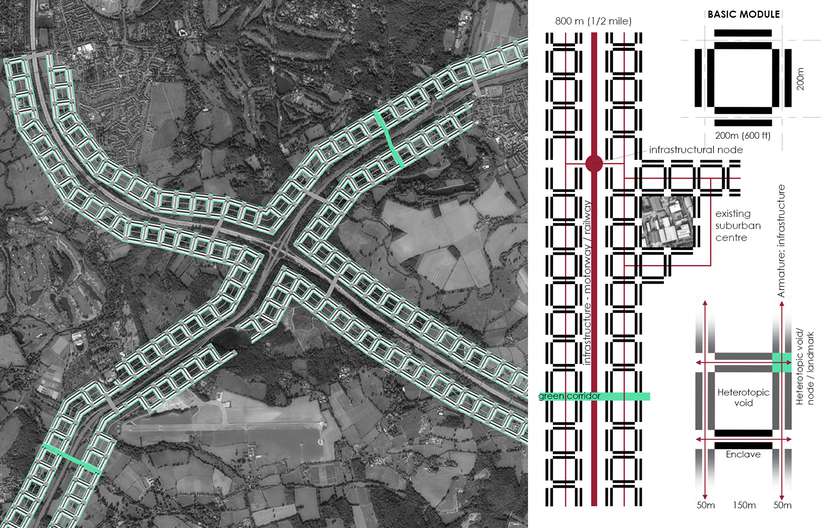
The project rethinks the old ideas of Metro-land in a contemporary context. It uses infrastructure as a form-defining armature which supports chain-link enclaves and is perforated with heterotopic voids. Infrastructure is an integral part of the formation and its footprint ratio to entire development is minimised.
Suburban condenser defines a clear edge between Nature and build environment. At the same time, by being porous, it allows the Nature flow through through.

Infrastructure has a clear functional, scale and speed hierarchy. As such it does not have a segregating effect on communities.
The enclave is a self-organising system which accommodates the private sphere - housing, business and retail activities, incorporate communal life and embraces the public sphere. By using uniformity and repetition, equality is ensured yet it is diversified by its context and inhabitants – heterogenous and egalitarian society.
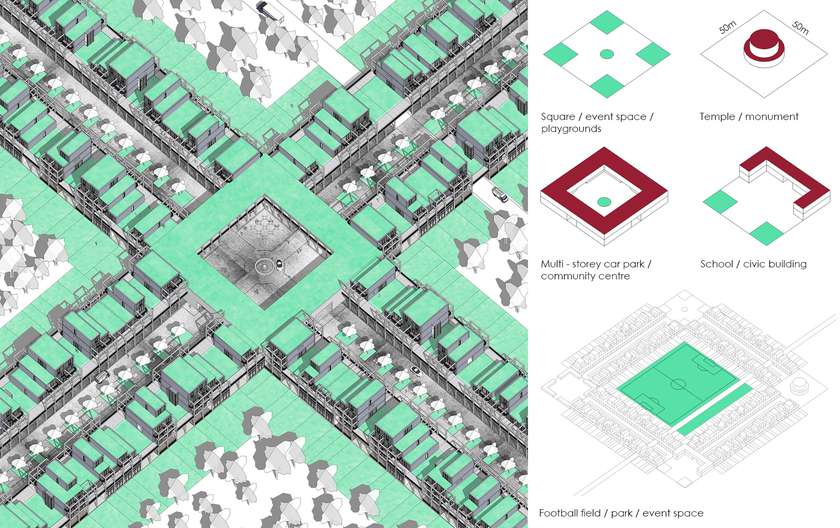
Heterotopic voids provide a space for uncertainty, endless possibilities and transformations for the future development. They are landmarks and nodes within the continuous framework.
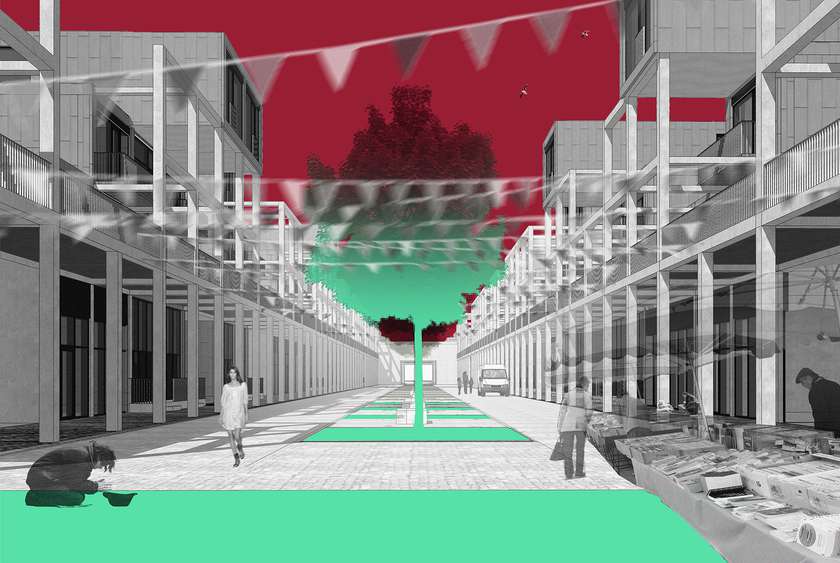
The suburban condenser is a built environment where:
▪ Public sphere is provided for knowledge and social exchange.
▪ Co-working and work from home are supported by providing facilities next to the living space.
▪ Different housing typologies offer accommodation for a diverse spectrum of households.
▪ Spaces are adaptable and extendable by using flexible modules, layouts and structure.